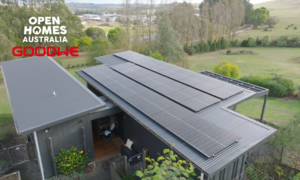Australia’s Clean Energy Regulator (AEMO) has declared several changes will take effect on January 1, impacting postcode zones for solar power system installations. It’s expected that these alterations will affect the amount of subsidy on offer to certain regions.

The solar rebate – which is also Australia’s primary PV subsidy – is currently formed on Small-scale Technology Certificates (STCs). A system is allowed a certain number of certificates, which is assessed on the following criteria:
- How big the system is and the solar panel capacity
- The date of installation – including how many years before the scheme is deemed complete at the end of 2030.
- The postcode it is installed in.
All postcodes sit within a zone from 1 to 4, based on what their solar radiation levels are. They are also accompanied by various multipliers, which forms the calculation for how many STCs are given. The lower the number for the zone, the more STCs a given system is eligible for.
While this can seem slightly technical, the main formula for calculating this is:
Multiplier x panel capacity (kW) x years still left within the scheme.
It’s also important to note that homes that sit on the very brink of one postcode may also be able to claim more than one STC, in comparison to a property sitting in across the road in another postcode with the same radiation levels.
Earlier this year, the AEMO asked for public feedback on the changes to postcode zoning. Since then, the Regulator has accessed and fine-tuned the process and had initially expected to action the changes in October 2019. Now, these edits will jump into action on January 1, 2020.
The winners and the losers
The AEMO stated that a majority of postcodes wouldn’t feel the effects of these changes, but those with changes will be eligible for more STCs, and fewer postcodes will receive fewer ones.
Ultimately, this means that there are more winners than losers, according to the Regulator.
Coinciding with these changes is the decrease in the subsidy across the nation, which will also come into effect from January 1. This comes as part of a phaseout of the rebate, and may potentially add further costs to a single system. It’s likely, however, that these additional costs may be absorbed by other aspects, eliminating pressure for consumers.
For Australians looking to install a system shortly, it’s recommended to assess the current zoning, in comparison to the changes scheduled for January 1.
If you’d like to receive three free quotes on the costs you may be up for; we recommend getting in touch with our team now.











































